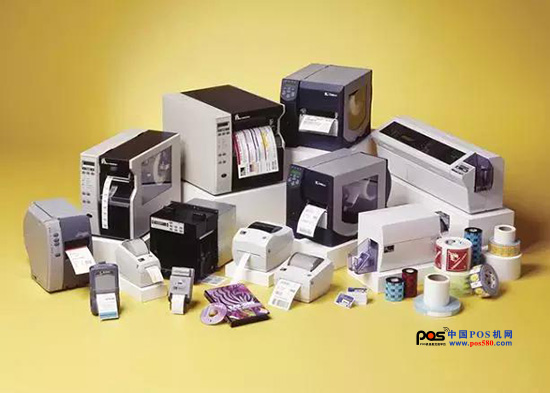
Bar code printer is a special type of printer. The printing of bar code printer is based on heat, and the printing is done with ribbon or thermal paper as the printing medium. Today we will talk about the things about barcode printers.
[Advantages of Barcode Printers]
1. Industrial quality, not limited by the amount of printing, can be printed 24 hours
2. It is not limited by printing materials, and can print PET, coated paper, thermal paper stickers, synthetic materials such as polyester and PVC, and water-washed fabrics.
3. The text and graphics printed by thermal transfer method have scratch-proof effect. Printing with special ribbon can also make the printed products waterproof, anti-fouling, anti-corrosion and high temperature resistant.
4. Print speed is extremely fast, up to 10 inches per second
5. You can print consecutive serial numbers and connect to the database for batch printing.
6. Not restricted by the working environment
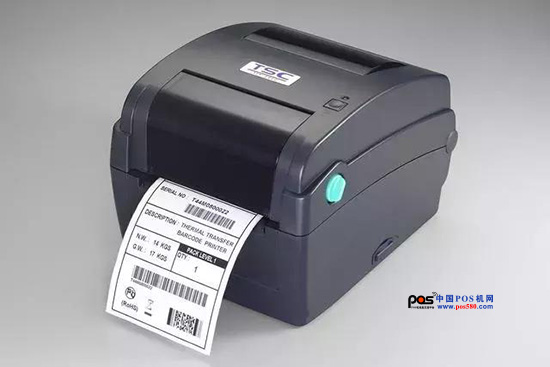
[Common Barcode Printer Type]
Fixed printer
The intelligent features and rich interface make it accessible to a variety of devices and mainframes. Without the support of a PC, the user program can be executed independently. The cast magnesium alloy structure is durable and lightweight.
Industrial grade bar code printer, suitable for industrial field application requirements, to meet industrial high quality printing needs.
Desktop barcode machine
Small economic bar code printing device, suitable for small and medium-sized enterprises for mobile office use, small size, solid structure, powerful function and low price.
Portable barcode printer
Small, lightweight and resistant to environmental disturbances. Infrared or Bluetooth technology is used as the print data communication interface.
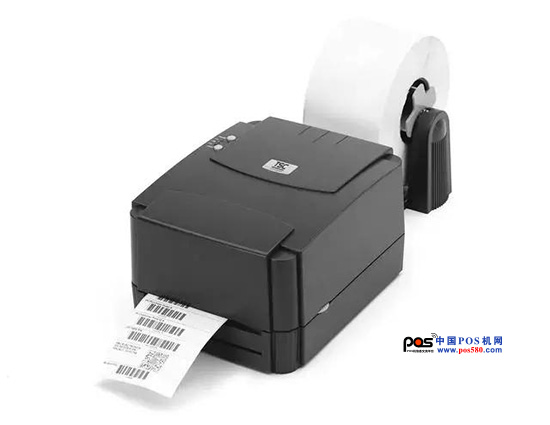
[Parameter Analysis]
Font: refers to the type and quantity of fonts that can be realized by barcode printers without the support of foreign fonts. The fonts are divided into Chinese fonts, English fonts and some other types of fonts. Font changes can generally be achieved through buttons on the printer panel.
Memory: Because it needs to store the edited bar code content, it is also to improve the running speed of the product, especially the speed of printing, to save the printing task and the print task buffer in the printing task to ensure the smooth printing task. Upon completion, the barcode printer has designed an internal memory (referred to as memory) in the product to store the content edited by the user and some data that needs to be stored and exchanged when printing. Although the barcode is small, the amount of information actually contained is still relatively large. Therefore, the memory capacity of the strip printer is still relatively large, and some flash memory is supplemented.
Ribbon length: One of the consumables for bar code printers. The longer the ribbon length, the longer it will last, and the more bar code labels it can print.
Maximum print length: In the process of bar code label printing, bar code printer does not mean that it can print at one time. For printing length, there is a certain limit. The maximum print length is also expressed by the length unit MM.
Printing speed: The common printing method of inkjet printer and laser printer is different. The printing speed of bar code printer refers to the length label of the widest label tape that can be printed in the unit time. Generally speaking, it is used. Mm / s, that is, how many millimeters of label tape can be printed in one second.
Resolution: is an indicator common to all printing devices. Resolution refers to the highest achievable printing accuracy of the product. The printing precision on the market is: 200dpi, 300dpi, 600dpi. The higher the accuracy, the finer and clear the printed label text and barcode. At present, the resolution of bar code printers is mostly 300dpi.
Printing method: refers to the technology used by the bar code printer to print, generally water, bar code printers are using thermal transfer printing technology.
The thermal transfer technology is simply a special ribbon, which is transferred to paper or other kinds of materials by heating the toner coating on the belt through the working principle of a similar fax machine.
interface
The barcode printer and the computer are connected through an interface, and the barcode printer is divided into five types of interfaces.
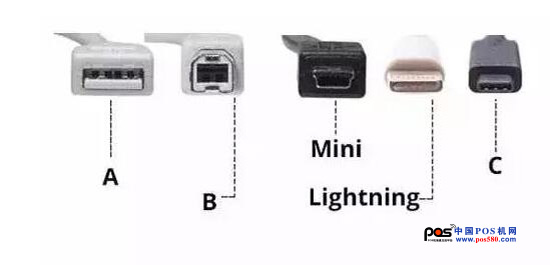
Serial port
The serial port is called serial interface, and the PC usually has two serial ports COM 1 and COM 2 . The serial port differs from the parallel port in that its data and control information are transmitted one by one. This will be slower, but the transmission interval will be longer than the parallel port, so the serial port should be used for longer interval communication. Usually COM 1 uses a 9-pin D-shaped connector, also known as the RS-232 interface, while COM 2 uses an old-fashioned DB25-pin connector, also known as the RS-422 interface. It has been rarely used.
2. Parallel interface (parallel port)
The parallel interface, also referred to as "parallel port", is an enhanced two-way parallel transmission interface. The advantage is that there is no need to use other cards in the PC, the number of connections is not limited (as long as you have enough ports), the device is easy to install and use, and the maximum transmission speed is 1.5Mbps. At present, the parallel interface in the computer is mainly used as a bar code printer port, and the interface is no longer a 36-pin connector but a 25-pin D-shaped connector. The so-called "parallel" means that 8-bit data is transmitted simultaneously through parallel lines, so that the data transfer speed is greatly improved, but the length of the line for parallel transmission is limited, and the interference is increased due to the increase in length, which is prone to error.
3. USB interface
The full name of USB is Universal Serial Bus. USB supports hot plugging and plug and play. Therefore, USB interface has become the most important interface mode for electronic products such as MP3 and digital cameras. The change brought about by the use of USB for bar code printer applications is a significant increase in speed. The USB interface provides a connection speed of 12 Mbps, which is more than 10 times faster than the parallel port speed. At this speed, the file transfer time is greatly reduced. The USB 2.0 standard further advances the interface speed to 480 Mbps, which is 20 times faster than the normal USB speed, which greatly reduces the transmission time of print files.
Of course, the USB interface is also divided into A and B types. As for the difference between them? To put it simply, the Type-A interface is the most common standard USB interface we usually use, and other shapes of interfaces are its derivatives.
4. Network port
The network port is the RJ45 network port. The printer supports network printing, that is, just connect to the LAN, set its IP, share, network protocol, etc., and then set up the computer that needs to be connected to print under the same network (the specific steps are not expanded here) , you can directly print out the data transmitted by the computer through the network transmission. The biggest advantage of network port printing is that it supports multiple computers sharing the same printer. The printing speed is fast, especially when printing some documents with large amount of data and complicated and high-precision pictures.
5. PS/2 interface
PS/2 is one of the most common interfaces on older computers for devices such as mice and keyboards. The connector is smaller in package and still uses a bidirectional serial communication protocol and provides a selectable third set of keyboard scans. The code set supports 17 host-to-keyboard commands at the same time. Now, the keyboards on the market are compatible with PS/2 and USB keyboards, but with different functions. The advantage of PS/2 is that it does not occupy system resources. The disadvantage is that its interface device does not support hot swapping. Forced hot swapping may burn the motherboard.
[ routine maintenance]
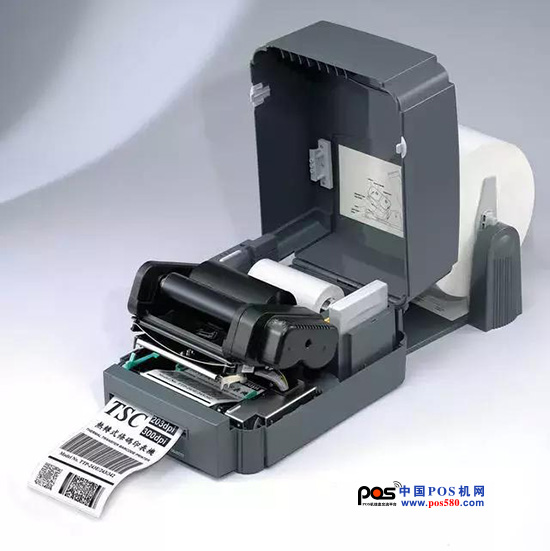
1. Bar code print head cleaning
Turn off the power of the barcode printer, turn the barcode print head up, remove the ribbon and label paper, and wipe the barcode print head with a cotton swab (or cotton cloth) dipped in a little barcode print head cleaning solution until it is clean. Then lightly dry the barcode printhead with a clean cotton swab.
2. Cleaning of the drum
After cleaning the bar code printhead, clean the rollers with a cotton swab (or cotton cloth) soaked with a little 75% alcohol. The method is to scrub the roller while rubbing it by hand, and after it is clean, dry it. The cleaning interval for the above two steps is usually three days. If the bar code printer is used frequently, it is best to do it once a day.
3. Cleaning of the drive system and cleaning inside the chassis
Because the general label paper is self-adhesive, the glue is easy to stick to the shaft and channel of the transmission, and dust is added, which directly affects the printing effect, so it needs to be cleaned frequently. Usually once a week, the method is to scrub the shaft of the transmission, the surface of the channel and the dust inside the chassis with a cotton swab (or cotton cloth) soaked in alcohol, clean and dry.
[Maintenance of bar code print head]
1. To get the best out of it, clean the bar code printhead every time you use a roll of ribbon or a roll of thermal paper. Note that when cleaning the bar code printer printhead, remove the ring to prevent scratching the bar code printhead and use a grounded metal strap or anti-static pad to prevent static damage to the bar code printhead.
2. You can use a 70% alcohol swab to turn off the printer and turn on the barcode printer head. Use a small amount of cotton cloth to brush on the mechanical part of the printer, or blow off the float. Do not use any hard metal or abrasive tools to tamper with the bar code print head contaminants.
3. Use a cotton swab with alcohol to press on the bar code print head from the top, then rotate the roller and use it to wipe.
Reminder: Bar code printer temperature is generally maintained between 10-24, not too high, otherwise it is easy to reduce the life of the print head, pay attention to the ribbon and label combination, generally coated paper with wax-based ribbon, synthetic paper with half tree Or a full-tree ribbon. In addition, the label paper should be kept flat, so do not make it uneven, otherwise the print head will be easily worn.
Cake cage Desk
Cake cage Desk
Xi'an ATO International Co., Ltd , https://www.xianato.com
![<?echo $_SERVER['SERVER_NAME'];?>](/template/twentyseventeen/skin/images/header.jpg)